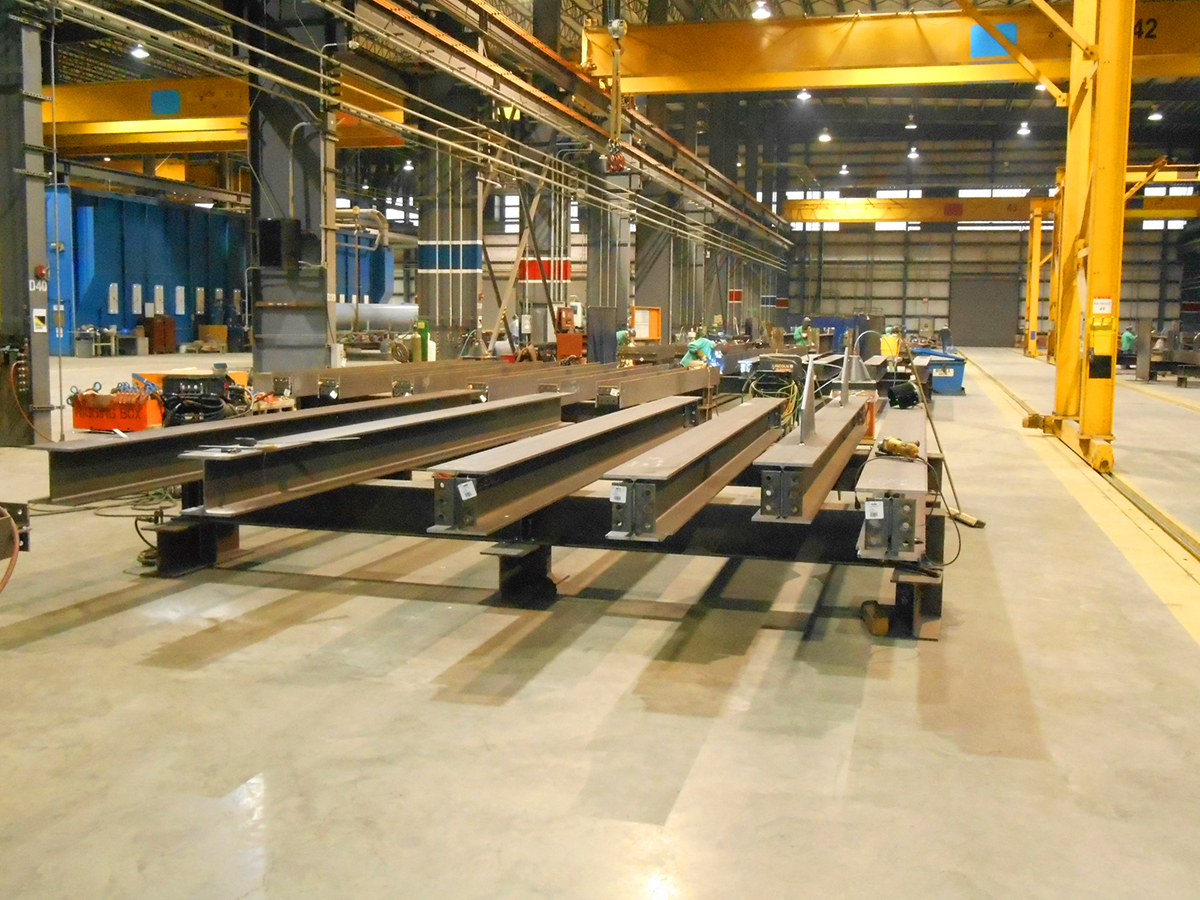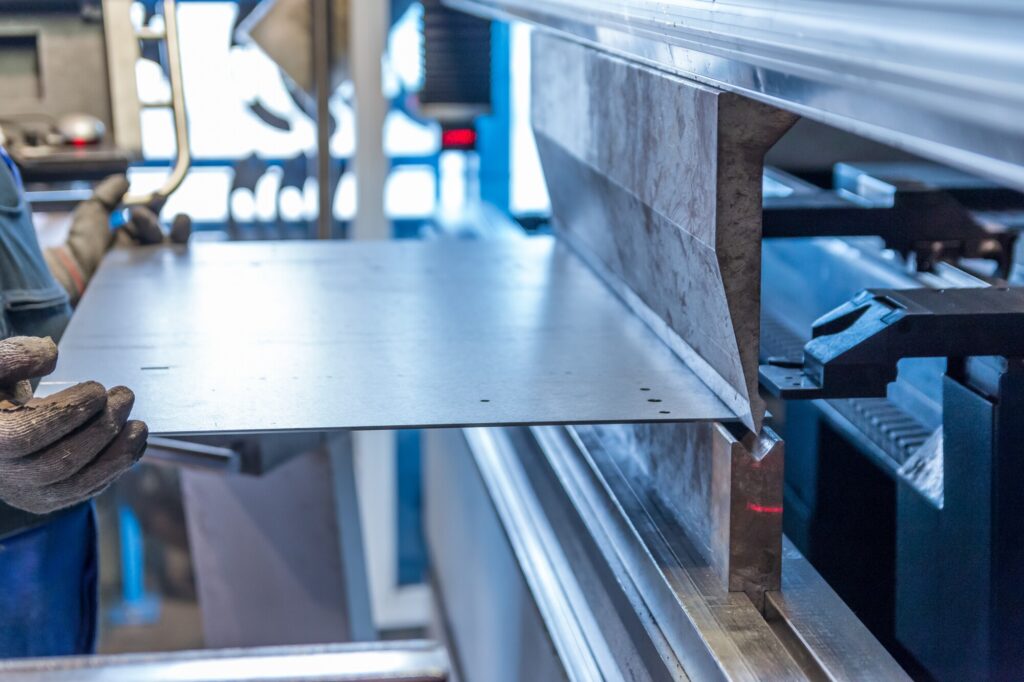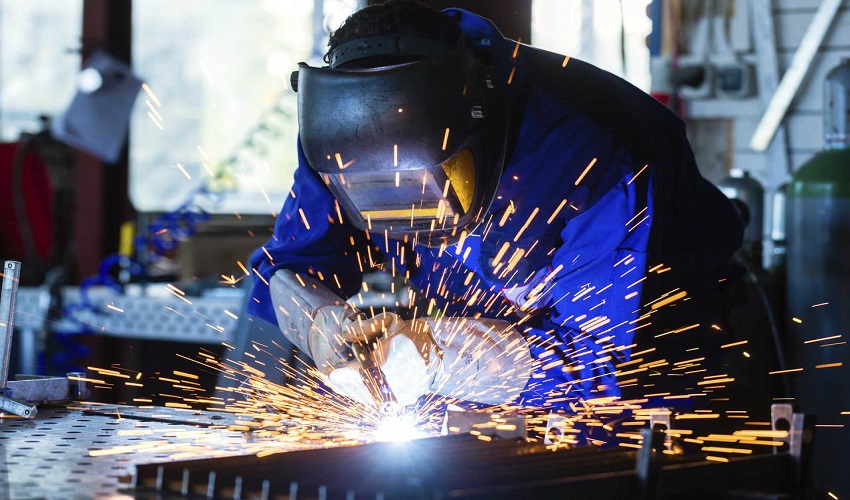Steel Fabrication Melbourne: Workmanship Meets Innovation
Steel Fabrication Melbourne: Workmanship Meets Innovation
Blog Article
Innovative Patterns in Steel Fabrication: Enhancing Resilience and Accuracy
In the realm of steel fabrication, the search of longevity and precision has brought about a wave of cutting-edge trends that are improving the market. From innovations in welding innovations to the combination of robotic automation in manufacture processes, the landscape of steel production is evolving swiftly. High-strength alloy advancement, coupled with the usage of 3D modeling and simulation software application, is pushing the boundaries of what is attainable in regards to structural honesty and accuracy. The expanding focus on sustainable methods in steel production is not just driving effectiveness however also cultivating a much more ecologically aware strategy to fabrication. These fads are not just forming the here and now yet also laying the groundwork for the future of steel manufacture, promising more enhancements in resilience and precision.
Advanced Welding Technologies
In the realm of steel manufacture, the adoption of sophisticated welding technologies has substantially revolutionized the sector's approach to accomplishing exceptional top quality and precision in structural welds. Advanced welding innovations, such as laser beam of light welding and friction stir welding, have become game-changers in the area. Laser beam of light welding utilizes a concentrated laser beam of light to join metal elements with amazing precision and rate, making it perfect for slim materials and intricate styles. On the other hand, rubbing stir welding produces incredibly solid bonds by mechanically intermixing the particles of the materials at the joint, eliminating the need for thawing the metal. These modern technologies provide numerous benefits, consisting of decreased heat-affected areas, minimal distortion, and improved mechanical properties in the welded joints. By leveraging these sophisticated welding methods, steel fabricators can boost the resilience, strength, and accuracy of their architectural welds, fulfilling the increasingly requiring demands of contemporary building jobs.
Robot Automation in Manufacture
Welcoming robotic automation has become a cornerstone of contemporary steel manufacture methods, improving procedures and enhancing efficiency throughout the industry. Robots are revolutionizing the way steel elements are manufactured, providing unparalleled precision and rate while reducing human error. These automated systems can deal with repeated tasks with regular precision, causing better output.
One trick advantage of robotic automation in steel construction is the ability to function all the time without tiredness, dramatically boosting production outcome. This continuous operation lessens downtime and accelerates task timelines, ultimately conserving costs for makers. Furthermore, robots can be programmed to perform detailed tasks that might be difficult or harmful for human workers, improving safety in the work environment.
Additionally, robotic automation enables smooth combination with various other electronic innovations, such as computer-aided layout (CAD) software and Internet of Things (IoT) systems (steel fabricators melbourne). This interconnected strategy boosts communication between various phases of manufacture, maximizing process and making sure real-time tracking and control. As the steel manufacture industry proceeds to advance, robotic automation attracts attention as a transformative force driving effectiveness and accuracy in producing processes

High-Strength Alloy Development
The advancement of high-strength alloy growth in steel fabrication is improving the industry's approach to boosting material resilience and performance. High-strength alloys are crafted to show exceptional mechanical residential properties, such as enhanced tensile strength, strength, and rust resistance contrasted to typical steel grades. By integrating these sophisticated alloys into manufacture procedures, suppliers can generate parts that withstand higher stress degrees and harsh environments, bring about more sturdy and trusted final product.
One trick benefit of high-strength alloy growth is the capability to decrease material density without endangering structural honesty. This not only results in lighter-weight parts however likewise adds to set you back financial savings and boosted effectiveness in manufacture and assembly procedures. Furthermore, the boosted strength-to-weight ratio of these alloys permits the style and building of structures with higher load-bearing capacities while lessening overall weight.
3D Modeling and Simulation Software
Advancements in steel fabrication processes have actually been considerably moved by the assimilation of innovative 3D modeling and simulation software devices. These tools allow fabricators to produce detailed digital versions of their jobs, allowing them to imagine the last product with accuracy before any kind of physical job starts.

Sustainable Practices in Steel Production
Integrating lasting practices into steel production procedures is important for minimizing ecological impact and ensuring long-term resource schedule. One key sustainable technique is the fostering of energy-efficient innovations to reduce greenhouse gas exhausts throughout the steel production process. This includes making use of renewable power sources, such as solar or wind power, to power steel plants and executing energy-efficient devices to optimize energy usage.
An additional critical aspect of sustainable steel manufacturing is the responsible sourcing of basic materials. This includes making sure that the iron ore and other sources made use of in steelmaking are obtained from honest and eco-friendly resources. By promoting transparency in the supply chain and sticking to rigorous ecological standards, steel suppliers can lessen the adverse effects of source extraction on regional ecosystems and communities.

Verdict
Finally, the innovative trends in steel construction such as advanced welding innovations, robotic automation, high-strength alloy advancement, 3D modeling and simulation software application, and sustainable practices are enhancing the toughness and accuracy of steel items. These innovations are reinventing the steel manufacture sector by improving top quality, effectiveness, and sustainability. It is clear that the future of steel manufacture depends on accepting these innovative modern technologies to meet the needs of contemporary construction and manufacturing sectors.
In the world of steel construction, the quest of resilience and precision has actually led to a wave of innovative trends that are reshaping the market.In the realm of steel construction, the adoption of sophisticated welding technologies has dramatically transformed the sector's approach to achieving remarkable quality and precision in structural welds. As click resources the steel manufacture market proceeds to develop, robotic automation stands out as a transformative force driving efficiency and accuracy in making processes.
Furthermore, reusing and reusing steel scrap and waste products play a considerable role in enhancing the sustainability of steel production. Alpha reo.In final thought, the innovative trends in steel manufacture such as sophisticated welding modern technologies, robotic automation, high-strength alloy development, 3D modeling and simulation software application, and sustainable methods are boosting the sturdiness and accuracy of steel items
Report this page